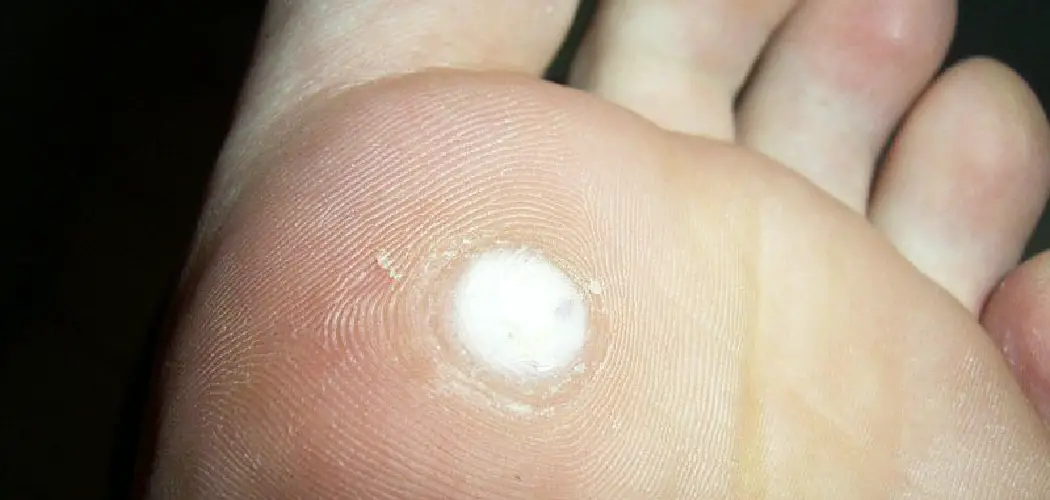Do you have a plantar wart? If so, you’re probably wondering how to get rid of it. You may have tried over-the-counter treatments, but they don’t work. Don’t despair – there are ways to get rid of a plantar wart. One way is to disinfect your shoes after each wear. Here’s how to disinfect shoes after plantar wart.
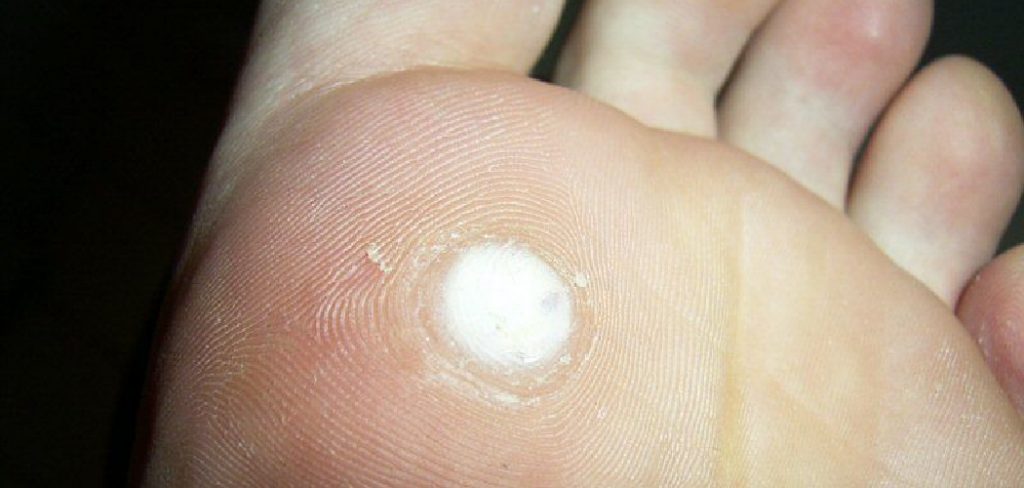
What is a Plantar Wart?
A plantar wart is a type of wart that appears on the soles of your feet, particularly on the weight-bearing areas such as the heels or balls of the feet. They are caused by the human papillomavirus (HPV) and can be easily spread through direct contact with an infected person or surface. Plantar warts can be painful and can make it difficult to walk, so it’s important to take care of them as soon as possible. It’s also important to take preventative measures to avoid getting them in the first place.
Why Disinfect Shoes After Plantar Wart?
One of the best ways to get rid of a plantar wart is to disinfect your shoes after each wear. This is because warts are often spread through contact with the virus that causes them. So by disinfecting your shoes, you can reduce your risk of getting a wart. Additionally, disinfecting your shoes can help prevent the spread of warts to other people or other parts of your body. It’s a simple and effective way to protect yourself and others.
Things You’ll Need:
You will need the following items to disinfect your shoes after a plantar wart:
Shoes:
You can disinfect any type of shoes, but it’s easier to do with ones that are easy to clean, such as rubber or plastic. If you have fabric shoes, make sure they are washable.
Disinfectant:
There are several types of disinfectants you can use for this process. Some options include:
- Bleach solution (1 part bleach to 10 parts water)
- Rubbing alcohol (at least 70% concentration)
- Hydrogen peroxide
- Vinegar
Choose the one that works best for you and what you have available.
Cleaning Brush:
A small cleaning brush, such as a toothbrush, can help with scrubbing the inside of your shoes.
10 Methods on How to Disinfect Shoes After Plantar Wart
Method 1: Use Disinfectant Spray:
The easiest way to disinfect shoes after a plantar wart is to use a disinfectant spray. Spray the shoes down and allow them to air dry. Make sure to wait until the shoes are completely dry before wearing them again.
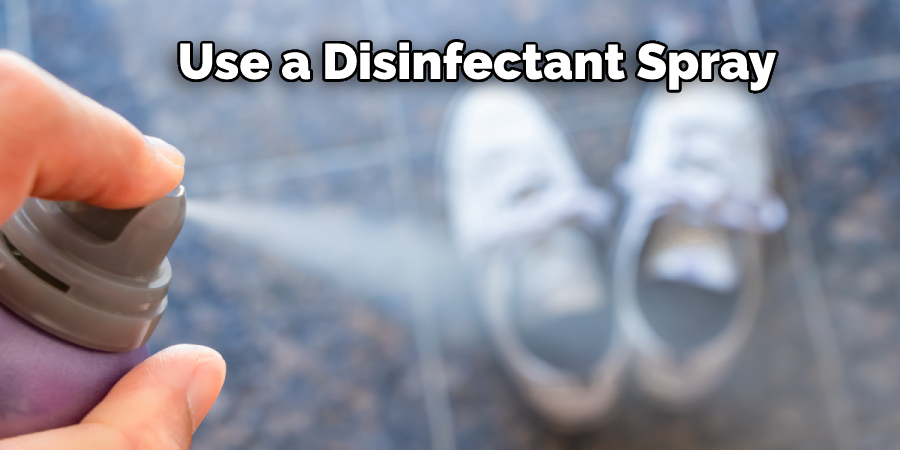
How to do it:
1. Remove your shoes and socks.
2. Spray the insides of your shoes with disinfectant spray. Make sure to get in all the cracks and crevices.
3. Let your shoes air dry for a few hours before putting them back on.
Method 2: Use Alcohol:
If you are looking for a quick and easy way to disinfect your shoes after a plantar wart, then using alcohol is the best option. First, pour some alcohol onto a cloth or paper towel and wipe down the entire surface of the shoe. Pay special attention to any areas where the wart may have been present. Then, allow the shoes to dry completely before wearing them.
If you are dealing with a particularly stubborn wart, you may need to repeat this process a few times before it is completely gone. But, again, be sure to follow the safety instructions on the bottle of alcohol and avoid contact with your skin.
Method 3: UV Shoe Sanitizer:
Another option for disinfecting shoes after a plantar wart is to use a UV shoe sanitizer. This type of sanitizer uses ultraviolet light to kill any bacteria or viruses that may be present on the shoes. To use a UV shoe sanitizer, follow these steps:
1. Plug in the UV shoe sanitizer and wait for it to heat up.
2. Place the shoes in the sanitizer.
3. Close the lid and let the sanitizer run for 10 minutes.
4. Remove the shoes and allow them to cool down.
5. Air dry the shoes before wearing them again.
UV shoe sanitizers can be found online or at stores that sell shoe care products. They are relatively affordable, and most models come with a timer so that you can be sure the shoes are being sanitized for the correct amount of time. If you have a plantar wart, using a UV shoe sanitizer is a good way to disinfect your shoes and help prevent the wart from spreading.
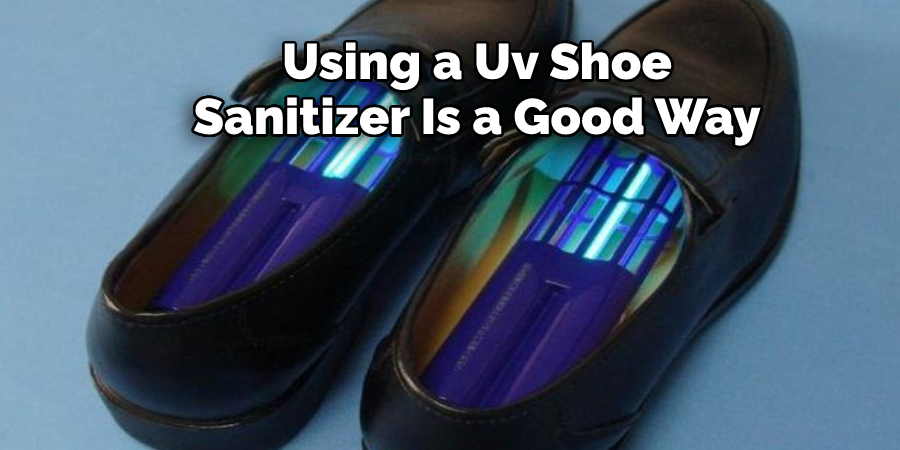
Method 4: Bleach:
Bleach is a very effective disinfectant and sanitizer. It can kill most bacteria, viruses, and fungi. To disinfect your shoes with bleach, mix 1 part bleach with nine parts water. Soak a cloth in the solution and wipe down your shoes. Let them air dry.
It is important to note that bleach can cause damage to some materials, so be sure to test it on a small area first. Also, never mix bleach with other household cleaners, as it can create a dangerous gas.
If you are not comfortable using bleach, other disinfectants are available that can be used instead. Just follow the instructions carefully and allow your shoes to air dry completely before using them.
Method 5: Baking Soda and Vinegar:
This is a popular home remedy for disinfecting many things, including shoes. Mix baking soda and white vinegar in equal parts and pour into a spray bottle. Spray the mixture onto your shoes and let it sit for about 15 minutes. Then, wipe off the residue with a cloth. Your shoes will be disinfected and smell fresh!
Some of the methods to disinfect your shoes and feet: It can also be beneficial to disinfect your feet along with your shoes, especially if you have a plantar wart.
Method 6: Use Tea Tree Oil(Optional)
Tea tree oil is a natural disinfectant that can kill the virus that causes plantar warts. It also has anti-inflammatory and analgesic properties to help relieve pain and inflammation.
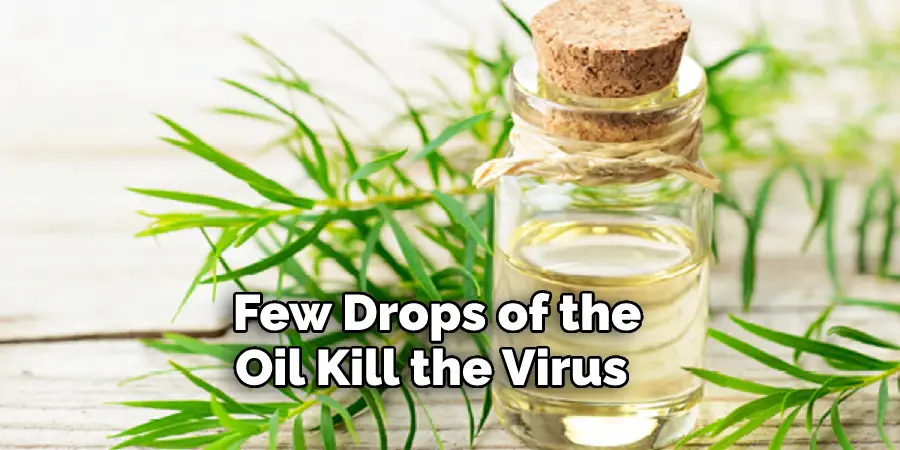
To use tea tree oil, put a few drops of the oil on a cotton ball. Apply it to the wart and cover it with a bandage. Leave the application on overnight. Repeat this process for a few nights until the wart disappears.
You can also add a few drops of tea tree oil to a warm bath and soak your feet for 10-15 minutes. This will help disinfect your feet and soothe any discomfort from the wart.
Method 7: Use Banana Peel(Optional)
Another way to disinfect shoes after the plantar wart is by using banana peel. Banana peel has antifungal and antibacterial properties that can help get rid of the wart virus. Cut a piece of banana peel big enough to cover the wart. Put the banana peel over the wart and secure it with a bandage or tape. Leave the banana peel on overnight. The following day, remove the banana peel and rinse your feet with warm water. Repeat this daily until the wart is gone.
It is important to note that while this method may work for some people, it is not scientifically proven to be effective. You may still need to use other methods or consult a doctor if the wart persists. It is always best to consult a medical professional for proper treatment.
Method 8: Change Your Socks Regularly
To prevent the spread of plantar warts, it is important to change your socks regularly. Sweat and moisture can create a breeding ground for bacteria and viruses, so changing your socks frequently decreases the chances of reinfection. Make sure to wear clean socks every day, and if your feet tend to sweat a lot, change them throughout the day. Otherwise, you could potentially spread the virus to other areas of your feet or to other people.
In addition to changing your socks, make sure to wash them in hot water and dry them thoroughly before wearing them again. This will help kill any bacteria or viruses that may be present on the socks.
Method 9: Wear Shoes That Allow Your Feet to Breathe
Wearing shoes that are breathable can also help prevent the spread of plantar warts. Choose shoes made from natural materials that allow airflow, such as leather or canvas. Avoid plastic or synthetic materials that trap moisture and create a warm environment for bacteria and viruses to thrive.
You can also consider using shoe inserts or insoles that have antibacterial properties to help keep your shoes and feet clean. You may also want to rotate your shoes and let them air out for a few days before wearing them again.
Method 10: Keep Your Feet Clean and Dry
Lastly, keeping your feet clean and dry is crucial in preventing the spread of plantar warts. Wash your feet regularly with soap and water, making sure to dry them thoroughly afterward. Pay extra attention to areas where warts are prone to develop, such as between toes and on the soles of your feet. Keeping your feet clean and dry can help prevent bacteria and viruses from entering through small cuts or breaks in the skin.
By following these methods, you can effectively disinfect your shoes after a plantar wart and reduce the chances of spreading it to others. It is important to keep in mind that these methods may not be effective for everyone, and if you have a persistent or severe case of plantar warts, it is best to consult a healthcare professional for proper treatment. Remember to always follow the instructions on any products used to disinfect your shoes and prioritize foot hygiene to prevent future warts. So, take care of your feet and keep them clean to avoid any discomfort or inconvenience caused by plantar warts.
Thanks for considering how to disinfect shoes after plantar wart! Here are seven methods, each with its benefits and drawbacks. We hope one of these methods works for you.
How to Wash Bzees Shoes?
Bzees shoes can be easily washed by hand or in the washing machine. To hand-wash, use a mild detergent and cool water. Soak the shoes for a few minutes, and then use a soft brush to scrub them clean. Rinse thoroughly, and then let them air dry.
Place the shoes in a mesh laundry bag and wash on the gentle cycle with cold water to wash in the machine—drip dry or air dry.
Regardless of how you clean them, allow the shoes to air dry completely before wearing them again. This will help prevent any bacteria or fungus from growing.
You can also spot-clean any stains or areas of dirt with a gentle cleaner and then wipe them off with a damp cloth. Just make sure to rinse off the cleaning solution completely before letting the shoes dry.
Additional Tips:
- Always read and follow the care instructions on your Bzees shoes before cleaning.
- Avoid using hot water, bleach, or harsh chemicals to clean your shoes as they can damage the materials.
- If your Bzees shoes have removable insoles, remove them before washing to prevent them from losing their shape.
- Do not put Bzees shoes in the dryer as the heat can damage the materials and cause them to lose their shape.
- To help maintain the shape of your Bzees shoes, stuff them with paper or towels while they air dry.
- Regularly cleaning your Bzees shoes can help extend their lifespan and keep them looking like new. So, make sure to clean them frequently, especially after wearing them in dirty or wet conditions.
- If your Bzees shoes have any embellishments or decorations, make sure to spot-clean them carefully to avoid damaging them.
- If you have any concerns about washing your Bzees shoes, contact the manufacturer or a shoe specialist for further guidance.
- Always prioritize foot hygiene and cleanliness to avoid any discomfort or issues caused by bacteria or viruses. Properly cleaning your shoes can help prevent the spread of warts, as well as other infections such as athlete’s foot.
- Lastly, consider investing in a pair of Bzees shoes with antimicrobial properties to help keep your feet clean and free from bacteria and viruses. Prevention is key to maintaining healthy and happy feet.
Keep in mind that these methods may not be effective for everyone, and if you have a persistent or severe case of plantar warts, it is best to consult a healthcare professional for proper treatment. Remember to always follow the instructions on any products used to disinfect your shoe and prioritize foot hygiene to prevent future warts. So, take care of your feet and keep them clean to avoid any discomfort or inconvenience caused by plantar warts.
You Can Check It Out to Lace Shoes for Plantar Fasciitis
Frequently Asked Questions
Q1: How to Stop Socks From Bunching Up in Shoes?
A1: There are a few things that you can do to help stop socks from bunching up in your shoes. One is to make sure that you buy the correct shoe size for your foot. You should also purchase socks that fit well and aren’t too tight. If you have a pair of shoes that are too tight, you can stretch them out by stuffing them with newspaper. You can also try using a shoe stretcher.
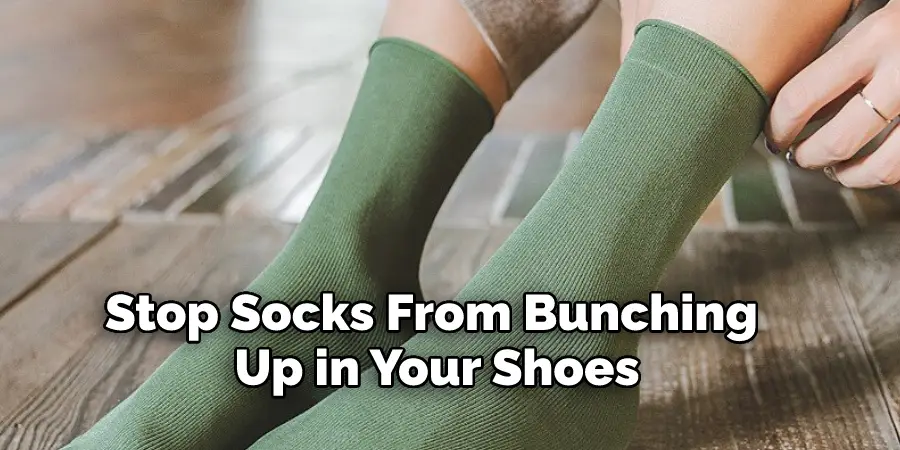
Q2: Can You Use Vinegar as A Disinfectant for Your Shoes?
A2: There are various ways to disinfect shoes after a plantar wart. One popular method is to use vinegar. Vinegar is a natural disinfectant and is affordable and easy to find. Soak a paper towel in vinegar and place it on the wart for about 10 minutes. Repeat this process 2-3 times per day until the wart disappears. But keep in mind that vinegar can be harsh on certain materials, so make sure to test it on a small area of your shoe first before using it to disinfect the entire shoe.
Q3: How Can I Know if My Shoe Cleaner Is Effective or Not?
A3: There are a few ways to disinfect shoes after a plantar wart. One way is to use an over-the-counter shoe cleaner. First, however, it is important to make sure that the shoe cleaner effectively prevents the wart from spreading. You can read reviews from other customers or consult a healthcare professional for recommendations on effective shoe cleaners. Additionally, make sure to follow the product instructions carefully for the best results.
Q4: Does the Plantar Wart Virus Live in Shoes?
A4: There is no definitive answer as the plantar wart virus has not been specifically studied in this context. However, it is reasonable to believe that the virus could live on shoes for some time, especially if they are not properly disinfected. Therefore, it is important to take steps to disinfect shoes after a plantar wart has been removed.
Conclusion
Disinfecting your shoes is an important part of preventing the spread of plantar warts. Ensure to disinfect your shoes regularly, especially if you have been in contact with someone who has a plantar wart. If you are unsure how to disinfect your shoes, please consult a doctor or health professional. Thanks for reading our post about how to disinfect shoes after plantar wart.
You Can Check It Out to Keep Shoes From Dry Rotting

